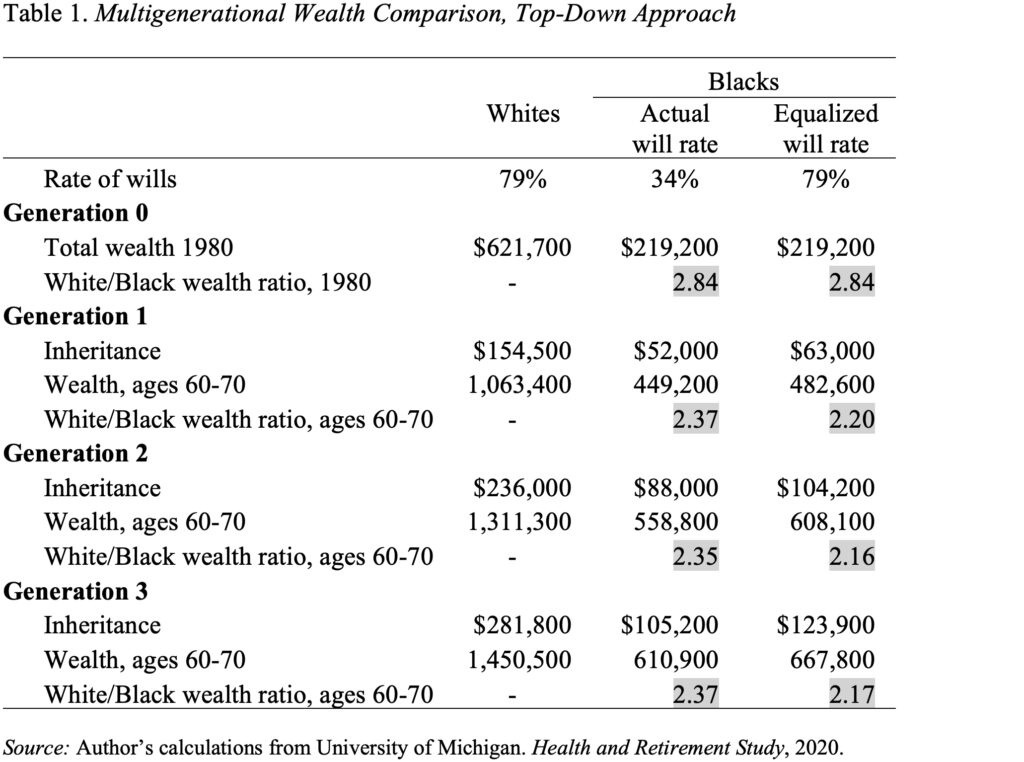Writing Wills May Help Close the Racial Wealth Gap – Center for Retirement Research

If black families wrote wills at the same rate as white families, how much would it help?
Having a will is really important. In the absence of a will, the deceased’s assets are distributed according to state intestacy law. These rules work well for traditional families, but can lead to a negative result if those intended are not related by blood, marriage, or legal adoption. In addition, dying intestate is a particular problem when the estate is modest and the largest asset is the home, where the heirs often cannot coordinate in maintaining or selling the property – destroying the value in the process.
Despite the benefits of having a will, will writing varies greatly by race. Black, Hispanic, and other minority respondents are significantly less likely to have an inheritance than their White counterparts (see Figure 1). This pattern is not surprising given that having a will is related to receiving an inheritance, and non-White families are significantly less likely to receive an inheritance than their White counterparts, even accounting for education, age, and marital status. This vicious cycle of low inheritance and underwriting of Black inheritance contributes to the wealth gap between Black and White families that has plagued the United States for over a century.
Given the importance of wills in saving, probate, and preserving the value of passed down assets, we wanted to see how equal rates of wills among Black and White families would have narrowed the racial wealth gap over the past few generations.
The analysis begins with the first White-Black wealth gap estimated since 1980 for households with a head aged 60-70 – when households enjoy their lifetime wealth – and then tracks the wealth of White and Black household representatives over three 20-year periods. generations – 2000, 2020, and 2040. Intergenerational wealth estimates depend largely on two measurements: 1) the relationship between inheritance and late-life wealth; and 2) the relationship between late-life wealth and legacies. With the coefficients from this regression in hand, we calculated the inheritance from each generation to its next generation under two assumptions – the actual rates of will writing for Whites and Blacks and assuming that the rates of writing wills for Blacks are equal to those for Whites.
The results are shown in Table 1. (I know it’s a lot of numbers, but I wanted you to see the repeated process.) In Generation 0, the White-to-Black wealth ratio is 2.84. If we assume that the percentage of households with a deed remains at 79 percent for Whites and 34 percent for Blacks, the White/Black wealth ratio ends up at 2.37. On the other hand, if the probate rate of Black families is increased to that of Whites – that is, from 34 percent of families to 79 percent – the White/Black wealth ratio is 2.17.

In short, the results show that if inheritance rates had been equal for Black and White families three generations ago, the White/Black wealth ratio would have declined by 10 percent – a modest but meaningful decline. Other measurements yielded very similar results. We think that these results are a promising way to intervene to increase the will of Black households.
Source link



